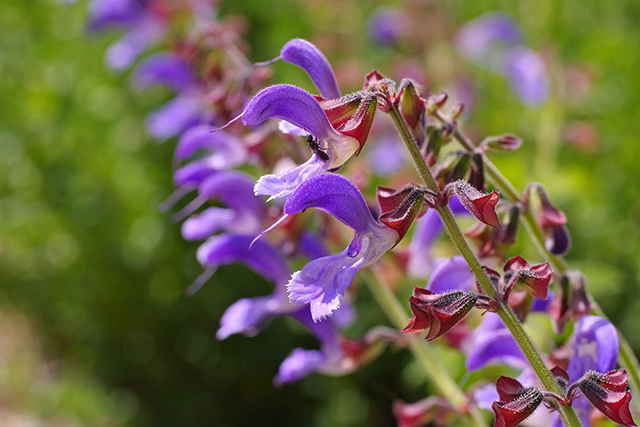
Danshen has been used in TCM for over two millennia
Like many herbs used in traditional Chinese medicine, danshen has been widely used and studied for well over 2,000 years. In the first Chinese materia medica, danshen was noted for its ability to treat carbuncles and insomnia and improve blood circulation. Today, the herb is still used for the same purposes. It is also used to promote menstrual discharge and relieve restlessness of the heart. Danshen can treat conditions ranging from chest pain due to lack of blood flow (angina pectoris) to qi stagnation and blood stasis. The latest version of the Chinese Pharmacopoeia, China's official compendium of drugs, lists the following clinical uses for different preparations that include danshen:
- Danshen tablet – treats complications arising from coronary heart disease, including angina pectoris and irritability
- Compound danshen tablet (Fu fang danshen pian) – a tablet made of danshen, Chinese ginseng, and camphor; used for treating chest distress and angina pectoris
- Danqi tablet – a tablet that combines danshen and Chinese ginseng; used for treating vertigo, headaches, and dysmenorrhea
- Dianxi granule – a blend of danshen, ox knee herb, tian ma, moutan peony, Chinese peony, Szechuan lovage, Rehmannia, horny goat weed, mulberry mistletoe, cape jasmine, sicklepod, and cannabis; used for treating stroke-related kidney problems
In their paper, the researchers listed a total of 201 compounds found in danshen by previous studies. They divided these compounds into several groups: Diterpenoids refer to those that have a core structure of 20 carbon atoms arranged in rings. These compounds are some of the major bioactive components in danshen, thanks to their multiple pharmacological properties. Water-soluble phenolic acids, on the other hand, are responsible for the herb's antioxidant and anti-inflammatory activities. Other components include essential oils, triterpenoids, flavone, amino acids, and many more. (Related: Red sage, also known as Chinese sage, found to protect the kidneys of people with severe acute pancreatitis and obstructive jaundice.)
An herb packed with multiple health benefits
For their review, the researchers pored over studies that investigated the pharmacological properties of danshen. These beneficial properties include:
- Anti-inflammatory – According to a recent study, the phenolic acid known as salvianolic acid B, which is present in the aqueous ethanol extract of danshen, can inhibit the activation of the pro-inflammatory protein tumor necrosis factor-alpha (TNF-a) in human aortic endothelial cells. This makes it a potential agent in treating vascular inflammatory diseases.
- Antioxidant – Phenolic acids and tanshinones present in danshen are known for their ability to prevent oxidative stress -- a precursor of chronic diseases. These two types of compounds also have cardioprotective properties: Salvianolic acids can protect the heart and the vascular system from the effects of oxidation, while tanshinone IIA can alleviate stroke-related injuries. Tanshinone IIA can also protect the liver from cirrhosis.
- Antidiabetic – Multiple studies have shown that danshen possesses therapeutic potential against diabetes, a major chronic disease that affects many people in developing and developed countries. In an animal study, treatment with danshen for one month improved symptoms in diabetic rats.
The authors of the review are hopeful that their paper will encourage researchers to further study danshen, in particular, how it can be further improved as a medicine so that it can be used in clinical practice in the future.
Learn more about danshen and other herbs used in TCM at ChineseMedicine.news.
Sources include:
Please contact us for more information.























